Legal advertising has become more sophisticated and competitive in recent years. As digital marketing platforms evolve, law firms are presented with endless options for generating leads. From search engine ads to social media campaigns and specialized legal networks, the opportunities are vast. But more choices also mean more decisions. How much should you spend per lead? What level of quality can you expect? When is a higher lead cost justified? And above all, how should you go about balancing lead cost and quality?
For law firms and legal marketers focused on acquiring new clients, the challenge lies in striking a balance between lead cost and quality. A low-cost lead might seem appealing on the surface, but if it never converts into a paying client, that money is wasted. On the other hand, a high-quality lead that consistently turns into valuable business can justify a higher price. The key is to build a lead generation strategy that aligns your budget with your goals, while consistently evaluating performance to make informed decisions. Additionally, sales teams play a crucial role in ensuring that high-quality leads are effectively managed and converted.
Curious to learn more? Keep reading for an overview of balancing lead cost and quality that you’ll want to know before you move forward.
Important Takeaways
- Key takeaways: High-quality leads often cost more but can deliver better returns over time.
- Lead sources, practice area, region, and ad platform all influence both cost and quality.
- A consistent intake process is critical for evaluating lead value accurately.
- Firms should track conversion rates, average case value, and client lifetime value when measuring ROI.
- Choosing the right lead partner can save time and reduce wasted ad spend.
What Makes a Lead ‘High Quality’ in Terms of Lead Quality?
Not all leads are created equal. A high-quality lead is one that meets the criteria your firm cares about and has a high likelihood of becoming a paying client. These highly qualified leads typically come from people who have a clear legal issue, fall within your geographic and practice area focus, and are actively seeking help.
Quality is influenced by how the lead was generated. For example, someone who clicks on an ad about personal injury lawsuits, then fills out a form describing their accident and providing accurate contact information, is generally a better lead than someone who passively browses your site without a specific need.
To reiterate: lead quantity isn’t the only metric to focus on. It is crucial to distinguish valuable leads from less qualified ones to ensure that your sales team can focus on high-quality opportunities. High-quality leads are more likely to show up to consultations, provide necessary documentation, and engage in timely communication. They also tend to require less persuasion and follow-up, which saves your staff time and improves conversion rates. That’s why balancing lead quantity and quality is so important. Don’t fall into the trap of having to prefer quality leads or having to prioritize lead quantity. Find a balance when generating potential leads.
Why Cheap Leads Can Be Costly
It can be tempting to chase the lowest possible cost per lead. After all, if you can generate 100 leads at $10 each, it might seem like a bargain. But the real question is how many of those leads are qualified and will become paying clients. If only one out of 100 leads converts, your actual cost per client is $1,000, not $10.
In contrast, if a $150 lead converts 25 percent of the time, then your cost per client is $600. While the upfront lead cost is higher, the long-term return is better. Investing in high-quality leads may incur a higher upfront cost, but it ultimately yields better ROI and contributes to sustained business growth. Wasted time on unqualified leads, increased intake workload, and low conversion rates can quietly drain your budget and your staff’s attention.
Firms must think about lead cost within the bigger picture. Cheap leads may provide volume, but without quality, they often result in frustration and low returns. The goal is not to spend the least but to spend wisely.
Cost Per Lead vs. Cost Per Acquisition
To build an effective advertising strategy, it’s essential to understand the difference between cost per lead (CPL) and cost per acquisition (CPA). CPL refers to how much you pay to generate one lead, regardless of whether it becomes a client. CPA is how much you spend to acquire an actual paying client.
Many law firms focus only on CPL, but CPA gives a clearer picture of value. A firm might spend $50 per lead through one source and $200 through another. If the $200 leads convert more frequently and generate higher case values, they might be a better investment.
Tracking CPA requires keeping detailed records of how each lead was generated, how it progressed through intake, and whether it resulted in retained business. This information can help you allocate your budget more effectively across lead sources by balancing cost and quality.
Case Value and Client Lifetime Value
The value of a lead is not just about the initial case. Some clients may return for future legal needs or refer others to your firm. Customer lifetime value (LTV) helps you account for repeat business, word-of-mouth marketing, and brand loyalty.
For example, a family law client who hires your firm for a divorce may later return for child custody modifications or refer friends and family. That client may be worth much more than the initial case fee.
Firms should consider average case value and CLV when evaluating whether a high lead cost is justified. If you regularly generate high-value cases from certain channels, it may make sense to pay more for those leads compared to lower-value, high-volume cases.
Matching Lead Type to Practice Area
Different practice areas require different lead strategies, and understanding the lead generation process is crucial for sourcing high-quality leads. For example, personal injury and workers’ compensation leads tend to be competitive and expensive because of the potential for high payouts. Bankruptcy, immigration, or traffic ticket leads are often cheaper, but conversion rates and case values may be lower.
Understanding how your practice area affects lead pricing can help you set realistic expectations. A personal injury firm may find value in paying $2,000 per lead if the average settlement is $30,000. But a family law attorney may need lower-cost leads and a high conversion rate to stay profitable.
Firms should also evaluate how urgent or emotional the need is. Urgent legal issues often result in quicker conversions and better lead quality, while research-driven areas may require longer nurturing periods.
Local Market Conditions Matter
Your geographic region can have a significant impact on lead cost and quality. Large urban areas often have higher competition among law firms, which drives up advertising costs. However, these areas also tend to have higher search volumes and more lead opportunities.
In contrast, rural areas may offer cheaper leads but fewer of them. In these regions, personalized marketing or community-specific strategies may outperform broad digital ads.
Legal marketers should consider market saturation, average ad costs, and competitor activity when budgeting for leads. A strong understanding of your local audience and collecting relevant data, such as marketing expenses, lead counts, and conversion rates, can guide your messaging and targeting decisions, improving both lead quality and cost efficiency.
The Role of Lead Source
Where a lead comes from plays a big role in its quality. Some common lead sources include:
- Search engine advertising (Google Ads)
- Paid legal directories
- Social media advertising (Facebook, YouTube, Instagram)
- Legal lead generation networks
- Referrals from past clients
- Organic website traffic
- Email marketing
Each source has pros and cons. Search ads often generate high-intent leads, but they can be expensive. Social media leads are cheaper but may be less urgent or specific. Legal directories provide visibility, but results can be mixed depending on listing strength.
Referrals and organic traffic typically provide the best quality leads, but are harder to scale quickly. Email marketing can be a cost-effective and efficient method, as analyzing the cost per lead from email campaigns often reveals its performance in generating leads compared to other methods. Blending short-term paid sources with long-term organic strategies is often the most effective approach.
Why Intake Processes Affect Perceived Quality
Sometimes, what appears to be a low-quality lead is actually a breakdown in the intake process. If calls go unanswered, forms are not followed up, or potential clients feel rushed or ignored, good leads can slip through the cracks.
Investing in intake training and tools is essential. Law firms should have a consistent intake process that includes timely follow-up, proper qualification, and clear communication. Intake staff should understand which questions to ask, how to gauge urgency, and how to build trust quickly. Additionally, having a dedicated sales team to engage with sales-qualified leads (SQLs) ensures that high-quality leads are effectively managed and converted.
If you improve your intake process, you may find that more of your current leads convert, reducing your CPA and making your campaigns more profitable.
Working With Lead Providers
Many firms partner with third-party lead generation companies to supplement their own efforts. These companies specialize in attracting, screening, and delivering potential clients to law firms. Choosing the right partner can be valuable, but not all providers are equal.
A good lead provider will explain how leads are generated, how they are filtered, and what kind of exclusivity or territory protection is offered. Some firms prefer exclusive leads that are only sent to one law office, while others are open to shared leads that are cheaper but more competitive. Developing a lead scoring system helps in evaluating and prioritizing the quality of leads provided by third-party companies.
When evaluating a lead provider, request performance data, ask about return policies, and look for reviews or references. Transparency and consistency are key. A provider who understands your goals and practice area can be a long-term asset.
Walker Advertising is a lead provider with forty years of experience helping connect attorneys to prospective clients through qualified lead generation. By pre-qualifying leads for attorneys who work with us, we’re able to deliver higher-quality leads that are more likely to convert to real cases and real results. Even better, we operate our lead generation services through various sub-brands, like Los Defensores and 1-800-THE-LAW2, to ensure that we’re able to hyper-target various demographics and client “personas,” which makes it easier for attorneys to understand what sort of leads they’re purchasing.
Further, we take transparency and ethics extremely seriously. To that end, we operate a tight ship when it comes to legal compliance (keeping in mind up-to-date regulations on how one should properly market to clients when generating leads). We encourage you to get in touch with us here at Walker to learn more about how we can help.
Measuring Long-Term Results
To know if your lead strategy is working, you must measure long-term outcomes. That means tracking leads through every step of the client journey, from first contact to final billing. Over time, you will begin to see patterns in which sources deliver consistent results.
Use tools like customer relationship management (CRM) software or practice management systems that allow you to tag leads by source. Analyze conversion rates, case values, and retention rates to compare different channels.
Regular reviews of your data help you refine your campaigns, eliminate poor performers, and reinvest in the channels that bring you the most value. Embracing continuous improvement in your lead generation strategies ensures you adapt to changing markets and customer expectations, maintaining a competitive edge and achieving long-term success.
Avoiding the Trap of Vanity Metrics
Some firms fall into the trap of focusing on metrics that sound impressive but do not lead to actual business growth. High website traffic, low cost per click, or a large number of leads may feel like wins, but they do not matter unless they convert into clients.
Focus instead on actionable metrics like lead-to-client conversion rate, cost per acquisition, and average revenue per client. These numbers provide real insight into whether your marketing investment is producing meaningful returns by demonstrating the direct correlation between lead quality, conversion rates, and revenue.
Ask yourself not just how many leads you are getting, but how many are turning into real business. Thus, you’re not just balancing quantity of leads with quality, but also balancing lead cost and quality. When you keep that question at the center of your advertising strategy, better decisions follow.
Aligning Budget With Firm Goals
Not every firm needs the same number or type of leads. A solo attorney may prefer a few high-quality leads per week that result in premium clients. A high-volume firm may need many affordable leads each day to meet staffing needs.
Your lead strategy should match your firm’s size, capacity, and growth goals. Consider how many new clients you want to take on each month, what type of cases you are targeting, and what resources you have for follow-up and intake.
A clear understanding of your goals will help you choose the right mix of lead sources, allocate your budget effectively through strategic resource allocation, and adjust as your firm grows.
Building a Sustainable Strategy
Successful firms treat lead generation as an ongoing process, not a one-time campaign. Markets change, platforms evolve, and client behaviors shift. Staying flexible and curious, with a mindset of continuous optimization, is essential, especially when it comes to balancing lead cost and quality.
The most resilient law firms revisit their marketing strategies regularly, test new channels, and measure results. They view lead generation as a core business function that deserves ongoing attention and investment.
Contact Walker Advertising for Help Growing Your Firm’s Client Base
Whether you’re a solo lawyer, or a small firm lawyer, or are part of a larger firm with plans for further expansion, it’s important to grow your client base in order to hit your revenue and client growth goals. Here at Walker Advertising, we can help align your lead generation efforts with your target audience to grow your firm’s client base. We operate a number of popular attorney networks (including our Los Defensores and 1-800-THE-LAW2 brands) through which firms are able to access leads for various legal claims.
The leads we acquire through our various online marketing efforts — from social media marketing to targeted web ads — have been pre-qualified by our team so that you aren’t hassled by a flood of leads that are simply not relevant or actionable for your purposes. By accessing these quality leads, you’ll be well-equipped to select the best ones to grow your firm’s business.
Best of all, you won’t have to spend your valuable time and effort on building out your online marketing efforts. Don’t worry about SEO optimization, trend analysis, or any other complex marketing issues. Instead, use us to access pre-qualified inbound leads, and focus your limited internal resources on providing quality representation to your existing (and new) client base.
Contact Walker Advertising today to connect to a member of our team who can explain how our legal networks can help your firm’s business thrive in this ever-changing digital marketing landscape.
We look forward to assisting you.






